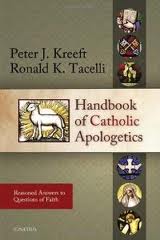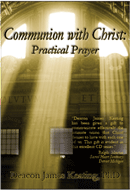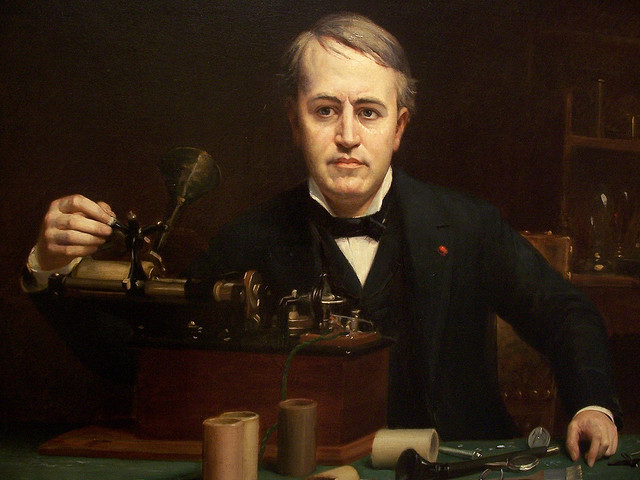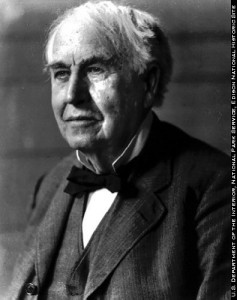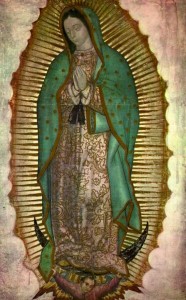Tags: catholic, catholic podcast, catholic prayer, cathollc spirituality
This entry was posted on Saturday, December 25th, 2010 at 2:13 pm
You can follow any responses to this entry through the RSS 2.0 feed.
Mark Brumley is one of the masters of today’s Catholic apologetics, so if he recommends a book to help us convey the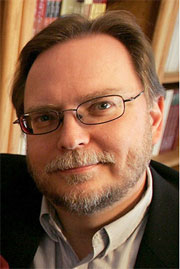 faith to others, we should take note! “The Handbook of Catholic Apologetics: Reasoned Answers to Questions of Faith” is a fantastic resource for any and all who wish to communicate the faith more clearly. It’s also for those who desire to deepen and grow in their own understanding of Catholic faith. Mark does a great job in this interview talking about some of those teachings, as well as, addressing today’s current issues.
faith to others, we should take note! “The Handbook of Catholic Apologetics: Reasoned Answers to Questions of Faith” is a fantastic resource for any and all who wish to communicate the faith more clearly. It’s also for those who desire to deepen and grow in their own understanding of Catholic faith. Mark does a great job in this interview talking about some of those teachings, as well as, addressing today’s current issues.
[powerpress]
Tags: answers to questions, catholic, catholic apologetics, catholic podcast, catholic prayer, cathollc spirituality, faith, igantius press, mark brumley
This entry was posted on Wednesday, December 22nd, 2010 at 8:43 am
You can follow any responses to this entry through the RSS 2.0 feed.
Episode 8 -The Way of Mystery: The Eucharist and Moral Living– 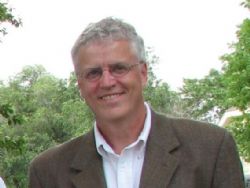 The Liturgy of the Word part 2 : The actual role of the reader (not performer), the role of the deacon, the role of those who hear the Word
The Liturgy of the Word part 2 : The actual role of the reader (not performer), the role of the deacon, the role of those who hear the Word
[powerpress]
Deacon James Keating, PhD, the director of Theological Formation for the Institute for Priestly Formation, located at Creighton University, in Omaha, is making available to â€Discerning Hearts†and all who listen, his series of programs entitled “The Way of Mysteryâ€.
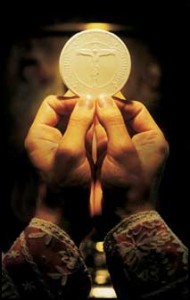 The Vatican II documents remind us that the spiritual journey is not made in a vacuum, that God has chosen to save us, not individually, but as The People of God. The Eucharist must help Christians to make their choices by discerning out of Christ’s paschal mystery. For this process to take place, however, Christians must first understand how the Eucharist puts them in touch with Christ’s passion, death, and resurrection, and what concrete implications being in touch with this mystery has for their daily lives.
The Vatican II documents remind us that the spiritual journey is not made in a vacuum, that God has chosen to save us, not individually, but as The People of God. The Eucharist must help Christians to make their choices by discerning out of Christ’s paschal mystery. For this process to take place, however, Christians must first understand how the Eucharist puts them in touch with Christ’s passion, death, and resurrection, and what concrete implications being in touch with this mystery has for their daily lives.
For more information on the “Institute of Priestly Formation†and for other material available by Deacon Keating, just click here
Don’t forget to pickup a copy of “Communion with Christ†, it is one of the best audio sets on prayer…ever!
Check out Deacon Keating’s “Discerning Heart†page
Tags: catholic, catholic podcast, catholic prayer, cathollc spirituality, creighton university, Deacon James Keating, institute for priestly formation, james keating, liturgy of the word, paschal mystery, spiritual journey, the eucharist, theological formation, way of mystery
This entry was posted on Sunday, December 19th, 2010 at 12:54 pm
You can follow any responses to this entry through the RSS 2.0 feed.
Daily Spiritual Reading, the fuel that keeps the spiritual fire going….Join Teresa Monaghen, of Pro Sanctity, as she offers a “Personal Plan for Holinessâ€. Listen along with these short, but beautiful meditations which encourage us to  continue on our journey as “saints in the makingâ€!
continue on our journey as “saints in the makingâ€!
Learn more about Pro Sanctity at www.prosanctity.org
Tags: catholic, catholic podcast, catholic prayer, cathollc spirituality, holiness, personal plan, personal plan for holiness, pro sanctity, Spiritual Reading, Spiritual Reading Daily, teresa monaghen
This entry was posted on Sunday, December 19th, 2010 at 7:25 am
You can follow any responses to this entry through the RSS 2.0 feed.
1. What makes Mary any different than you or me? What if Mary had said, “No�
2. How did the tradition of there being three magi start up if Matthew:2 doesn’t give a number of Magi? How did they get named? Basically, I need some more information on how this Catholic tradition got started.
[powerpress]
Mark Hart is an author, speaker, director and teacher, Mark’s work both written and spoken, is known across the country and world. While he serves as the Vice President of LIFE TEEN, he is known to tens of thousands simply as the “Bible Geek ®†Mark passionately echoes the gospel to all he encounters. He is as deep as he is funny, and his love for his wife and daughters is second only to his immense love for Jesus Christ.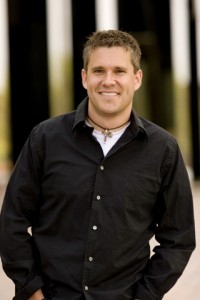
Visit Mark at www.lifeteen.com
Tags: bible, blessed mother, blessed virgin mary, catholic, catholic podcast, catholic prayer, catholic tradition, cathollc spirituality, life teen, love, magi, Mark answers, mark hart, mary, Mary Have, three magi
This entry was posted on Sunday, December 19th, 2010 at 7:07 am
You can follow any responses to this entry through the RSS 2.0 feed.
Fourth Sunday of Advent Cycle AÂ – from the Gospel of Matthew the full reading and reflection
“He will save his people from their sins”
an excerpt from today’s reflection by Don Schwager: 
The new era of salvation begins with the conception of Jesus in the womb of Mary by the power of the Holy Spirit. This child to be born is the fulfillment of all God’s promises.
Mary had to face an enormous challenge to her faith and trust in God and to the faith of her family and Joseph, the man she chose to marry. She was asked to assume a burden of tremendous responsibility. It had never been heard of before that a child could be born without a natural father. Mary was asked to accept this miraculous exception to the laws of nature. That required faith and trust in God and in his promises. Second, Mary was not yet married. Pregnancy outside of wedlock was not tolerated in those days. Mary was only espoused to Joseph, and such an engagement had to last for a whole year. She was asked to assume a great risk. She could have been rejected by Joseph, by her family, by all her own people. Mary knew that Joseph and her family would not understand without revelation from God. She nonetheless believed and trusted in God’s promises.
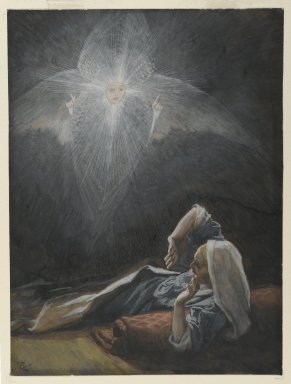 Joseph, a just and God-fearing man, did not wish to embarrass or punish his espoused wife, Mary when he discovered that she was pregnant. To all appearances she had broken their solemn pledge to be faithful and chaste to one another. Joseph, no doubt took this troubling matter to God in prayer. He was not hasty to judge or to react with hurt and anger. God rewarded him not only with guidance and consolation, but with the divine assurance that he had indeed called Joseph to be the husband of Mary and to assume a mission that would require the utmost faith, confidence, and trust in Almighty God. Joseph believed in the divine message to take Mary as his wife and to accept the child in her womb as the promised Messiah. Like Mary, Joseph is a model of faith for us. He is a faithful witness and servant of God’s unfolding plan of redemption. Are you ready to believe in the promises of God, even when faced with perplexing circumstances and what seems like insurmountable problems? God has not left us alone, but has brought us his only begotten Son, our Lord and Savior Jesus Christ. Let us celebrate Christmas, the feast of the Incarnation, with joyful hearts and let us renew our faith and hope in God and in his redeeming work.
Joseph, a just and God-fearing man, did not wish to embarrass or punish his espoused wife, Mary when he discovered that she was pregnant. To all appearances she had broken their solemn pledge to be faithful and chaste to one another. Joseph, no doubt took this troubling matter to God in prayer. He was not hasty to judge or to react with hurt and anger. God rewarded him not only with guidance and consolation, but with the divine assurance that he had indeed called Joseph to be the husband of Mary and to assume a mission that would require the utmost faith, confidence, and trust in Almighty God. Joseph believed in the divine message to take Mary as his wife and to accept the child in her womb as the promised Messiah. Like Mary, Joseph is a model of faith for us. He is a faithful witness and servant of God’s unfolding plan of redemption. Are you ready to believe in the promises of God, even when faced with perplexing circumstances and what seems like insurmountable problems? God has not left us alone, but has brought us his only begotten Son, our Lord and Savior Jesus Christ. Let us celebrate Christmas, the feast of the Incarnation, with joyful hearts and let us renew our faith and hope in God and in his redeeming work.
“Lord Jesus, you came to save us from sin and the power of death. May I always rejoice in your salvation and trust in your plan for my life”.
for the full reflection visit : Daily Reading and Meditation
Tags: catholic, catholic podcast, catholic prayer, cathollc spirituality, don schwager, fourth sunday of advent, gospel of matthew, joseph, mary
This entry was posted on Sunday, December 19th, 2010 at 6:22 am
You can follow any responses to this entry through the RSS 2.0 feed.
Third Saturday of Advent – from the Gospel of Matthew the full reading and reflection
“He will save his people from their sins”
an excerpt from today’s reflection by Don Schwager: 
Mary had to face an enormous challenge to her faith and trust in God and to the faith of her family and Joseph, the man she chose to marry. She was asked to assume a burden of tremendous responsibility. It had never been heard of before that a child could be born without a natural father. Mary was asked to accept this miraculous exception to the laws of nature. That required faith and trust in God and in his promises. Second, Mary was not yet married. Pregnancy outside of wedlock was not tolerated in those days. Mary was only espoused to Joseph, and such an engagement had to last for a whole year. She was asked to assume a great risk. She could have been rejected by Joseph, by her family, by all her own people. Mary knew that Joseph and her family would not understand without revelation from God. She nonetheless believed and trusted in God’s promises.
Joseph, a just and God-fearing man, did not wish to embarrass or punish his espoused wife, Mary when he discovered that she was pregnant. To all appearances she had broken their solemn pledge to be faithful and chaste to one another. Joseph, no doubt took this troubling matter to God in prayer. He was not hasty to judge or to react with hurt and anger. God rewarded him not only with guidance and consolation, but with the divine assurance that he had indeed called Joseph to be the husband of Mary and to assume a mission that would require the utmost faith, confidence, and trust in Almighty God. Joseph believed in the divine message to take Mary as his wife and to accept the child in her womb as the promised Messiah. Like Mary, Joseph is a model of faith for us. He is a faithful witness and servant of God’s unfolding plan of redemption. Are you ready to believe in the promises of God, even when faced with perplexing circumstances and what seems like insurmountable problems? God has not left us alone, but has brought us his only begotten Son, our Lord and Savior Jesus Christ. Let us celebrate Christmas, the feast of the Incarnation, with joyful hearts and let us renew our faith and hope in God and in his redeeming work.
“Lord Jesus, you came to save us from sin and the power of death. May I always rejoice in your salvation and trust in your plan for my life”.
for the full reflection visit : Daily Reading and Meditation
Tags: advent, angel, catholic, catholic podcast, catholic prayer, cathollc spirituality, don schwager, joseph, mary
This entry was posted on Saturday, December 18th, 2010 at 7:39 am
You can follow any responses to this entry through the RSS 2.0 feed.
Paul Thigpen is wonderful…he answers our questions about our faith not only from the head but also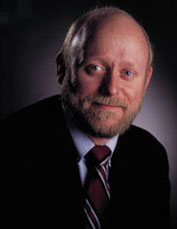 from the heart! More than just a proof text book, “Catholic Answers to Catholic Questions” tackles a why range of issues and questions.
from the heart! More than just a proof text book, “Catholic Answers to Catholic Questions” tackles a why range of issues and questions.
Catholic Answers to Catholic Questions provides solid answers to hundreds of common questions asked by people just like you questions both big and small regarding doctrine, history, morality, the pope, saints, the sacraments, the Mass, prayer, Scripture, and much more.
Be more confident in your faith. Allow the why to enhance the what you do as a Catholic. Make better decisions. Be more prepared to pass on your faith to others. Feed your curiosity. Author, theology professor, and Catholic apologist Paul Thigpen ensures the answe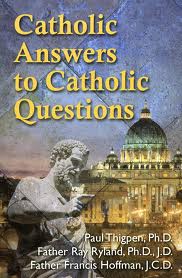 rs are not only rock-solid, but also pastoral in their approach and written in everyday, relevant language.
rs are not only rock-solid, but also pastoral in their approach and written in everyday, relevant language.
You can find this fine book here
[powerpress]
Tags: catholic, catholic answers, catholic apologist, catholic podcast, catholic prayer, cathollc spirituality, faith, morality, osv, our sunday visitor, paul thigpen, pope, sacraments, saints, scripture
This entry was posted on Friday, December 17th, 2010 at 9:07 am
You can follow any responses to this entry through the RSS 2.0 feed.
“In an instant, I saw five brilliant rays of light shine forth from his most holy wounds, and all came to my face.” St. Veronica Giuliani wrote these words more than three centuries ago, describing her mystical experience of Christ.
Vatican City, Dec 15, 2010 / 07:37 pm (vatican.va).-
Dear Brothers and Sisters,
Today I would like to present a mystic who did not live in the Middle Ages. She is St Veronica Giuliani, a Poor Clare Capuchin nun. The reason is that 27 December will be the 350th anniversary of her birth. Città di Castello, the place where she lived the longest and where she died, as well as Mercatello — her birthplace — and the Diocese of Urbino are celebrating this event with joy.
Indeed, Veronica was born on 27 December 1660 in Mercatello, in the Metauro Valley to Francesco Giuliani and Benedetta Mancini. She was the last of seven sisters, three of whom were to embrace the monastic life.
She was given the name “Orsola†[Ursula]. She was seven years old when her mother died and her father moved to Piacenza as customs superintendent of the Duchy of Parma. It was in this city that Ursula felt a growing desire to dedicate her life to Christ. The call to her became ever more pressing so that, when she was 17, she entered the strict cloister of the monastery of Capuchin Poor Clares in Città di Castello. She was to remain here for the rest of her life. Here she received the name of “Veronicaâ€, which means “true image†and she was in fact to become a true image of the Crucified Christ.
A year later she made her solemn religious profession and the process of configuration to Christ began for her, through much penance, great suffering, and several mystic experiences linked to the Passion of Jesus: being crowned with thorns, the mystical espousal, the wound in her heart and the stigmata.
In 1716, when she was 56, she became Abbess of the monastery. She was reconfirmed in this office until her death in 1727, after a very painful prolonged agony that lasted 33 days and culminated in a joy so profound that her last words were: “I have found Love, Love has let himself be seen! This is the cause of my suffering. Tell everyone about it, tell everyone!†(Summarium Beatificationis, 115-120).
On 9 July she left her earthly dwelling place for the encounter with God. She was 67 years old; 50 of those years she spent in the monastery of Città di Castello. She was canonized on May 26, 1893, by Pope Gregory XVI.
Veronica Giuliani wrote prolifically: letters, autobiographical reports, poems. However, the main source for reconstructing her thought is her Diary, which she began in 1693: about 22,000 handwritten pages that cover a span of 34 years of cloistered life.
Her writing flows spontaneously and continuously. There are no crossings-out, corrections or punctuation marks in it, nor was the material divided into chapters or parts according to a plan.
Veronica did not intend to compose a literary work; on the contrary, Fr Girolamo Bastianelli, a Filippini religious, in agreement with the diocesan Bishop Antonio Eustachi, obliged her to set down her experiences in writing.
St Veronica has a markedly Christological and spousal spirituality: She experienced being loved by Christ, her faithful and sincere Bridegroom, to whom she wished to respond with an ever more involved and passionate love. She interpreted everything in the key of love and this imbued her with deep serenity. She lived everything in union with Christ, for love of him, and with the joy of being able to demonstrate to him all the love of which a creature is capable.
The Christ to whom Veronica was profoundly united was the suffering Christ of the Passion, death and Resurrection; it was Jesus in the act of offering himself to the Father in order to save us.
Her intense and suffering love for the Church likewise stemmed from this experience, in its dual form of prayer and offering. The Saint lived in this perspective: she prayed, suffered and sought “holy povertyâ€, as one “dispossessed†and the loss of self (cf. ibid., III, 523), precisely in order to be like Christ who gave the whole of himself.
In every page of her writings Veronica commends someone to the Lord, reinforcing her prayers of intercession with the offering of herself in every form of suffering. Her heart dilated to embrace all “the needs of the Holy Churchâ€, living anxiously the desire for the salvation of “the whole world†(ibid., III-IV, passim).
Veronica cried: “O sinners… all men and all women, come to Jesus’ heart; come to be cleansed by his most precious blood…. He awaits you with open arms to embrace you†(ibid., II, 16-17).
Motivated by ardent love, she gave her sisters in the monastery attention, understanding and forgiveness. She offered her prayers and sacrifices for the Pope, for her Bishop, for priests and for all those in need, including the souls in Purgatory.
She summed up her contemplative mission in these words: “We cannot go about the world preaching to convert souls but are bound to pray ceaselessly for all those souls who are offending God… particularly with our sufferings, that is, with a principle of crucified life†(ibid., IV, 877). Our Saint conceived this mission as “being in the midst†of men and God, of sinners and the Crucified Christ.
Veronica lived profound participation in the suffering love of Jesus, certain that “to suffer with joy†is the “key to love†(cf. ibid., I, 299.417; III, 330.303.871; IV, 192). She emphasizes that Jesus suffers for humanity’s sins, but also for the suffering that his faithful servants would have to endure down the centuries, in the time of the Church, precisely because of their solid and consistent faith.
She wrote: “His Eternal Father made them see and feel the extent of all the suffering that his chosen ones would have to endure, the souls dearest to him, that is, those who would benefit from his Blood and from all his sufferings” (ibid., II, 170).
As the Apostle Paul says of himself: “Now I rejoice in my sufferings for your sake, and in my flesh I complete what is lacking in Christ’s afflictions for the sake of his Body, that is, the Church†(Col 1:24).
Veronica reached the point of asking Jesus to be crucified with him. “In an instantâ€, she wrote, “I saw five radiant rays issue from his most holy wounds; and they all shone on my face. And I saw these rays become, as it were, little tongues of fire. In four of them were the nails; and in one was the spear, as of gold, red hot and white hot: and it went straight through my heart, from one side to the other … and the nails pierced my hands and feet. I felt great pain but in this same pain I saw myself, I felt myself totally transformed into God†(Diary, I, 897).
The Saint was convinced that she was already participating in the Kingdom of God, but at the same time she invoked all the Saints of the Blessed Homeland to come to her aid on the earthly journey of her self-giving while she waited for eternal beatitude; this was her undying aspiration throughout her life (cf. ibid., II, 909; V, 246).
With regard to the preaching of that time which often focused on “saving one’s soul†in individual terms, Veronica shows a strong “sense of solidarityâ€, a sense of communion with all her brothers and sisters on their way towards Heaven and she lives, prays and suffers for all. The penultimate, earthly things, although appreciated in the Franciscan sense as gifts of the Creator, were always relative, altogether subordinate to “God’s taste†and under the sign of radical poverty.
In the communio sanctorum, she explains the gift of herself to the Church, as the relationship between the pilgrim Church and the heavenly Church. “All the Saintsâ€, she wrote, “are up there thanks to the merit and the Passion of Jesus; but they cooperated with all that the Lord did, so that their life was totally ordered … regulated by these same works (his)†(ibid., III, 203).
We find many biblical citations in Veronica’s writings, at times indirectly, but always precise. She shows familiarity with the Sacred Text, by which her spiritual experience was nourished. Furthermore, it should be pointed out that the intense moments of Veronica’s mystical experience are never separate from the salvific events celebrated in the Liturgy, where the proclamation of the Word of God and listening to it has a special place. Hence Sacred Scripture illumines, purifies and confirms Veronica’s experience, rendering it ecclesial. On the other hand, however, her experience itself, anchored in Sacred Scripture with uncommon intensity, guides one to a more profound and “spiritual†reading of the text itself, to enter into its hidden depths. Not only does she express herself with the words of Sacred Scripture but she also really lives by them, they take on life in her.
For example, our Saint often quotes the words of the Apostle Paul: “If God is for us, who is against us?†(Rom 8:31; cf. Diary, I, 714; II 116.1021; III, 48).
The assimilation of this Pauline text, her great trust and profound joy, becomes a fait accompliwithin her. “My soulâ€, she wrote, “was bound to the divine will and I was truly established and fixed for ever in the will of God. It seemed to me that I should never again have to be separated from this will of God and I came to myself with these precise words: nothing will be able to separate me from the will of God, neither anxieties, nor sorrows nor toil nor contempt nor temptation nor creatures nor demons nor darkness, not even death itself, because, in life and in death, I want all, and in all things, the will of God†(Diary, IV, 272). Thus we have the certainty that death is not the last word, we are fixed in God’s will, hence, truly, in eternal life.
In particular, Veronica proved a courageous witness of the beauty and power of Divine Love which attracted her, pervaded her and inflamed her. Crucified Love was impressed within her flesh as it was in that of St Francis of Assisi, with Jesus’ stigmata. “‘My Bride’, the Crucified Christ whispers to me, ‘the penance you do for those who suffer my disgrace is dear to me’…. Then detaching one of his arms from the Cross he made a sign to me to draw near to his side… and I found myself in the arms of the Crucified One. What I felt at that point I cannot describe: I should have liked to remain for ever in his most holy side†(ibid., I, 37).
This is also an image of her spiritual journey, of her interior life: to be in the embrace of the Crucified One and thus to remain in Christ’s love for others.
Veronica also experienced a relationship of profound intimacy with the Virgin Mary, attested by the words she heard Our Lady say one day, which she reports in her Diary: “I made you rest on my breast, you were united with my soul, and from it you were taken as in flight to God†(IV, 901).
St Veronica Giuliani invites us to develop, in our Christian life, our union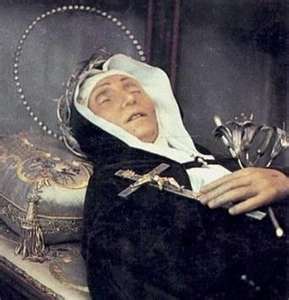 with the Lord in living for others, abandoning ourselves to his will with complete and total trust, and the union with the Church, the Bride of Christ.
with the Lord in living for others, abandoning ourselves to his will with complete and total trust, and the union with the Church, the Bride of Christ.
She invites us to participate in the suffering love of Jesus Crucified for the salvation of all sinners; she invites us to fix our gaze on Heaven, the destination of our earthly journey, where we shall live together with so many brothers and sisters the joy of full communion with God; she invites us to nourish ourselves daily with the Word of God, to warm our hearts and give our life direction. The Saint’s last words can be considered the synthesis of her passionate mystical experience: “I have found Love, Love has let himself be seen!â€. Thank you.
Tags: beauty, catholic, catholic podcast, catholic prayer, cathollc spirituality, christ in his suffering, Church, holy wounds, Jesus, mystic, mystic of the Church, mystical experiences, pope benedict, union with christ, veronica giuliani, witness
This entry was posted on Thursday, December 16th, 2010 at 6:03 am
You can follow any responses to this entry through the RSS 2.0 feed.
A special “reflection” by my pal, Omar F. A. Gutierrez. be sure to visit his blog at Regnum Novum
S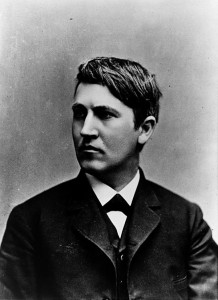 o I’m awoken on Friday morning of February 11th with a voice resembling that belonging to my friend Kris on the other end of the phone asking, “Did I wake you?†“No, no,†I answer while thinking to myself that I’d like to be the sort of person who should be up at this hour anyway.
o I’m awoken on Friday morning of February 11th with a voice resembling that belonging to my friend Kris on the other end of the phone asking, “Did I wake you?†“No, no,†I answer while thinking to myself that I’d like to be the sort of person who should be up at this hour anyway.
My friend continues, “What did you do to your website?†The question befuddles me. I’ve been fretting over the thing lately. I haven’t done anything I think to myself, but get off my back, and why are you calling me at this hour? She goes on to tell me that my counter, the thingy at the bottom of my site that counts the number of visits or hits I’ve received anywhere on my website, has shot through the roof. I had remembered checking it a couple days before. It was around 53,000. Kris, for it is Kris McGregor, tells me it is now at around 129,000. Something’s up. People from all over the world are downloading the series Kris and I are doing on the social doctrine of the Church: the Netherlands, Poland, Australia. “The Netherlands!†she says. I’m out of bed.
When I get downstairs to my computer to check the stats on my page, I find that, indeed thousands of people have visited my website in just the last few hours. Most of them spend only fleeting seconds on it. But some stay. Some read. Some move onto Kris’s website Discerning Hearts and download the series and then stay to download other things, devotionals and interviews. Who are these people from Italy, Spain, Venezuela, France, Germany? Why are they coming to my website? What is going on?
This whole technology thing is still pretty new to me. I was just thinking the other day how adamant I was at the ripe old age of twelve not to convert my extensive audio tape collection to CD. Those new-fangled CD’s were just a fad, I told myself. It’ll pass. Staunchly through high school I developed my tape collection. It was an impressive heap of blues and classic rock with smatterings of grunge and the entirety of the U2 oeuvre including some bootlegged concert audio.
Eventually I did break down and buy CD’s but I didn’t like it. In this new post-CD age, where everything is on the computer and downloadable onto iPods and the like, I am happy to say that I am without a gigantic CD collection, nothing like those grad-school friends of mine who’s collections could cover the entire wall of a oppressively undersized apartment. And my tapes? I like to believe that they are collector’s-item-cool now, just waiting to be taken onto the Antique Road Show in 2041 where I’ll be told I have the only existing audio cassette with U2′s 1987 Miami show. A guy can dream.
Thomas Alva Edison (1847-1931)
Blogging is a new thing to me as well, and I’ve eased into it with much help from Kris who seems to have her pulse on everything chic and contemporary. She’s the lady in the know. Me, I’m just the guy with glasses who in high school liked to sit over a copy of St. Augustine’s De Trinitate. It was my own little rebellion against the world of MTV, Beavis, and Butthead.
I am even more clueless about how to track down the people who come to my website. But there are programs for this, programs Kris tells me to get, and which I get, and which do blow me away in their specificity.
Hitsniffer, for instance, can tell you who is on your website, what city they live in, what they are looking at right now, how long they’ve been on your website, etc. Have you ever wondered how it is that a website can target advertisements to you and use your city’s name in it? We have the technology, and the technology as at our fingertips.
Now, granted, there is a bit of ick-factor in all of this. How much information is too much? Can I pinpoint an address? Can religious affiliation be determined by IP addresses? Well no. Don’t worry. There is no way I could track down any such information. And anyway, I wouldn’t know how to use the technology even if there were a way. What I did glean from the programs was that people were flocking to my website from all over the world to the tune of 600 to 800 people at a time. I mean that that many people were on my site at the same time. They were all new visitors and not repeats. Furthermore, there was no referring site from which they came except that they were all looking for information on Thomas Edison.
Thomas Edison? I had included a picture of old Tom on a post I had some months ago. “The Myth of the Self-Made Man†it was titled. I thought it was a rather uniquely catchy title myself. If you Google the phrase, however, you won’t find my post anywhere near the top. Anyway, for some time now, I had been getting hits on my website from people doing a search for Thomas Edison, probably for a picture of him, and finding my website as a source for just such a picture. There were a couple every day, but not huge numbers. The most visits I had ever gotten in a single day was something like 70. On this day I had 800 visitors in two minutes… all of them looking for Thomas Edison.
I wracked my brain to come up with some explanation of this. Perhaps someone famous had read one of my posts or heard the social doctrine series with Kris and linked it. Maybe, this was not about Edison at all. Maybe some wise figurehead of a faraway Catholic empire had read my post and was passing it around as mandatory reading for those who wanted to be in the know…like Kris. Or perhaps an e-mail was sent around to influential people, and I had “gone viral.†(I’m still not sure what this means or why it’s good, but I’m told that is the appropriately technical language to use in these cases.) .
By mid-day, and without much headway in solving the mystery, I finally just had it. I changed the post with the picture of Thomas Edison to read at the top, “If this is your first visit to Regnum Novum, welcome! Please let me know how you heard of this site as I am getting a lot of traffic. Please send me an e-mail or leave a comment.†When in doubt, ask. So I did.
The answer was pretty astonishing to me, and was proffered by two visitors.
Apparently, February 11th, 2011 was the 164th birthday of Thomas Edison. Google, which on holidays or memorable days sometimes puts up a special picture to spell out Google, put up a “doodle†to mark this fact of Edison’s birthday. If you clicked on the “doodle,†you were sent to a listing of all sorts of sources on Thomas Edison and a bar of pictures of the man. The most prominent of these pictures, a dashing photo of the man’s head and upper chest (seen to the left here), was the fourth one from the left, and was indeed the picture I had used on my site. If you clicked on it, the picture would come up on the screen and behind it, translucent and ethereal, was my website.
So of the global millions that day who used Google, millions clicked on the “doodle.†Of those, some fewer factor of millions looked at the pictures. Of those, perhaps hundreds of thousands liked the picture I used and clicked on it. Of those, some saw the title of the post partially obscured so that it read, “The Myth of the Self-Mad.†They would have also seen “Theology on Tap,†and “New Evangelization through Social Doctrine.†Thus, with interest and curiosity peaked, tens of thousands saw the picture and noticed the website and about 150,000 clicked on it… clicked on my website… behind the photo. Of those, several thousand explored the site and hundreds moved on to Kris McGregor’s site to – among other things – download the series on social doctrine…
…and all of it because of a picture of Thomas Edison.
Since then I cannot help but wonder in amazement for the great and glorious God that we have. Through happenstance? Through kismet? Through serendipity? No through the ever-loving guiding hand of the Almighty, thousands were exposed to my writings and to the work that I am doing with Kris to explain the social doctrine of the Church.Yes the lilies of the field are dressed in splendid robes. Me? I should trust, for He is always looking out for my good.
This mystery and miracle have certainly taught me a great deal about the power of technology as well, and this has given me greater appreciation for the words of the Holy Father Pope Benedict XVI in April of last year:
Without fear we want to set out upon the digital sea embracing the unrestricted navigation with the same passion that for 2,000 years has steered the barque of the Church. More than with technical resources, although necessary, we want to qualify ourselves dwelling in this universe too with a believing heart, that contributes to giving a soul to the uninterrupted communicational flow of the Internet.
May we all be so bold as to put out into the digital sea, all the while knowing that it is not we who man the barque of the Church but Peter and the Spirit of God.
Tags: catholic, catholic podcast, catholic prayer, cathollc spirituality, Thomas Alva Edison, thomas edison
This entry was posted on Wednesday, December 15th, 2010 at 6:39 am
You can follow any responses to this entry through the RSS 2.0 feed.
“The tax collectors and harlots go into the kingdom of God before you”
[powerpress = “Daily-Scripture”]
an excerpt from today’s reflection by Don Schwager:
Jesus makes his point clear: Good intentions are not enough. And promises don’t count unless they are performed. God wants to change our hearts so that we will show by our actions that we respect his will and do it. God offers each of us the greatest treasure possible – unending peace, joy, happiness, and life with him in his kingdom. We can lose that treasure if we refuse the grace God offers us to follow in his way of truth, love, and righteousness. Jesus encourages us to think – to think about the consequences of our choices, especially the choices and decisions that will count not just for now but for eternity as well. The choices we make now will affect and shape our future, both our future on earth as well as in the life of the age to come. Are you ready to obey your heavenly Father and to choose for his kingdom of righteousness and peace?
“Lord Jesus, change my heart that I may desire to do whatever is pleasing to you. Help me to respect your will and give me the strength, joy, and perseverance to carry it out wholeheartedly.”
for the full reflection visit : Daily Reading and Meditation
Tags: advent, catholic, catholic podcast, catholic prayer, cathollc spirituality, choices, don schwager, gospel of matthew, happiness and life, kingdom of god, peace joy, reflection
This entry was posted on Tuesday, December 14th, 2010 at 7:11 am
You can follow any responses to this entry through the RSS 2.0 feed.
January 10, 2011. The Basilica of Our Lady of Guadalupe is the most visited Catholic landmark in the Americas.
Every year more than 20 million people gather in this basilica located on the hill of Tepeyac in Mexico, where the Virgin Mary appeared four times to native-indian saint, Juan Diego in 1531.
During the apparition, the Virgin asked him if he could make a shrine here. The bishop of the area summoned Juan Diego to see if he was indeed telling the truth and asked him to bring roses from the hill where Mary appeared.
Fr. Salvatore Perrella
Vice President, Pontifical Marianum Theological Faculty (Rome)
“The Tepeyac hill is very rocky and it’s very hard to find roses, especially in December. Nevertheless, the farmer Juan Diego found what the bishop had asked of him. He put the roses in his cloak and went to the bishop. He said ‘here is the proof that you need’ and opened his cloak, he discovered that in place of the roses was this beautiful image of the Virgin Mary, who appeared dressed like a native Indian, with native Indian features.â€The last vision of the Virgin of Guadalupe was on December 12th, the day the feast is celebrated. It’s a special day for the Americas, especially Mexico, whose patroness is the Lady of Guadalupe.
Fr. Salvatore Perrella
Vice President, Pontifical Marianum Theological Faculty (Rome)
“The Mexican identity owes a lot to Mary, because she made them discover this identity, this unity of the Mexican people.”Perrella, who is an expert of apparitions, says that when the Virgin appears, she normally asks for the construction of a shrine.
Fr. Salvatore Perrella
Vice President, Pontifical Marianum Theological Faculty (Rome)
“It doesn’t necessarily have to be a place of worship in honor of the Virgin. Mary asked the Indian Juan Diego to construct a church to worship the true God. Because of this, the shrine of Guadalupe is not just a Marian shrine, but it is also a sanctuary in which Christ is the center of focus.â€In 1990, during the second journey of John Paul II to Mexico, he declared the indian Juan Diego blessed. In 2002, he became a saint.
In all of the Catholic Church’s history, the Vatican has only recognized 15 apparitions of the Virgin Mary. And the Virgin of Guadalupe is one of these.
Tags: apparitions, basilica of our lady of guadalupe, bishop, catholic, catholic podcast, catholic prayer, cathollc spirituality, image of the virgin mary, juan diego, marian shrine, Pontifical Marianum Theological Faculty, rome reports, saint juan diego, Salvatore Perrella, shrine of guadalupe, tepeyac hill, Vice President, virgin of guadalupe
This entry was posted on Sunday, December 12th, 2010 at 1:40 am
You can follow any responses to this entry through the RSS 2.0 feed.
Third Sunday of Advent Cycle AÂ – from the Gospel of Matthew the full reading and reflection
“The one who is least in the kingdom of heaven is greater than John the Baptist!”
an excerpt from today’s reflection by Don Schwager:Â 
Who is the greatest in the kingdom of God? Jesus praised John the Baptist as the greatest person born. Who can top that as a compliment? But in the same breath Jesus says that the least in the kingdom of God is even greater than John! That sounds like a contradiction, right? Unless you understand that what Jesus was about to accomplish for our sake would supercede all that the prophets had done and foreseen in the past. John is the last and greatest of the prophets of the old covenant. He fulfilled the essential task of all the prophets – to be fingers pointing to Christ, God’s Annointed Son and Messiah. John prepared the way for the Messiah and he pointed others to Jesus the Messiah at the River Jordan when he exclaimed, Behold the Lamb of God who takes away the sins of the world (John 1:29) John saw from a distant what Jesus would accomplish through his death on the cross – our redemption from bondage to sin and death and our adoption as sons and daughers of God and citizens of the kingdom of heaven.
Why did John, while in prison, send his disciples to question Jesus? John wanted them to hear and see firsthand from the Messiah himself before John would meet his fate, martyrdom at the hands of King Herod. Jesus says that his miracles and message about the kingdom or reign of God are proof enough for John and his disciples to recognize as the fulfilment of Isaiah’s prophecy foretelling the signs and wonders which the Messiah would perform (see Isaiah 35). Jesus in his characteristic fashion also returned one question with another. What do you see in 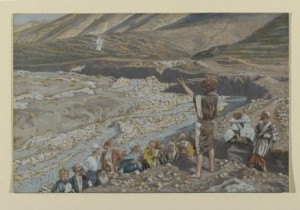 John the Baptist? And why does Jesus contrast John with a reed? Unlike a reed which is spineless and can be bruised easily, John stands as a pillar of truth which no demonic force can overtake because his heart is set on God and burns with the fire of God’s truth and love. Someone who is tepid – careless, half-hearted, and lukewarm – is easily swayed by whatever hits his or her fancy. If our heart is not filled with the love of God is easily grows cold and our faith wanes. If the heart feels emptied of God it seeks to fill the void with other things, which not being God, cannot bring true satisfaction. If we want to be like John the Baptist, then we must set our heart, mind, soul, and strength on one thing, and one thing only – the Lord Jesus Jesus Christ and his kingdom of everlasting peace, joy, and righteousness. There is no room for compromise. We are either for Jesus and his kingdom or against it. We either give him our full allegiance and submission or we hold on to the reigns of running life as we want it to go.
John the Baptist? And why does Jesus contrast John with a reed? Unlike a reed which is spineless and can be bruised easily, John stands as a pillar of truth which no demonic force can overtake because his heart is set on God and burns with the fire of God’s truth and love. Someone who is tepid – careless, half-hearted, and lukewarm – is easily swayed by whatever hits his or her fancy. If our heart is not filled with the love of God is easily grows cold and our faith wanes. If the heart feels emptied of God it seeks to fill the void with other things, which not being God, cannot bring true satisfaction. If we want to be like John the Baptist, then we must set our heart, mind, soul, and strength on one thing, and one thing only – the Lord Jesus Jesus Christ and his kingdom of everlasting peace, joy, and righteousness. There is no room for compromise. We are either for Jesus and his kingdom or against it. We either give him our full allegiance and submission or we hold on to the reigns of running life as we want it to go.
“Lord Jesus, stir my zeal for your righteousness and for your kingdom. Free me from complacency and from compromising with the ways of sin and worldliness that I may be wholeheartedly devoted to you and to your kingdom.”
for the full reflection visit : Daily Reading and Meditation
Tags: catholic, catholic podcast, catholic prayer, cathollc spirituality, don schwager, john the baptist, kingdom of heaven, lamb of god, martyrdom, third sunday of advent
This entry was posted on Saturday, December 11th, 2010 at 11:11 pm
You can follow any responses to this entry through the RSS 2.0 feed.
1. How can I talk about my faith with my family and friends, especially during the holidays?
2. What if they throw up issues about the Church that I don’t know how to answer?
[powerpress]
Mark Hart is an author, speaker, director and teacher, Mark’s work both written and spoken, is known across the country and world. While he serves as the Vice President of LIFE TEEN, he is known to tens of thousands simply as the “Bible Geek ®†Mark passionately echoes the gospel to all he encounters. He is as deep as he is funny, and his love for his wife and daughters is second only to his immense love for Jesus Christ.
Visit Mark at www.lifeteen.com
Tags: catholic, catholic podcast, catholic prayer, cathollc spirituality, holidays, life teen, mark hart
This entry was posted on Saturday, December 11th, 2010 at 8:12 am
You can follow any responses to this entry through the RSS 2.0 feed.
Episode 3 – Regnum Novum: Bringing forth the New Evangelization through Catholic Social Teaching with Omar Guiterrez -Value # 3 – Look , Judge, Act 
Discerning Hearts is blessed to present Omar F. A. Guiterrez, M.A. , Special Assistant  to Archbishop George Lucas of the Archdiocese of Omaha, in a groundbreaking series which breaks open the heart of Catholic Social Doctrine.
We encourage you to visit “Regnum Novum – A New Kingdom: A Revolution†Omar Guiterrez’s blog site
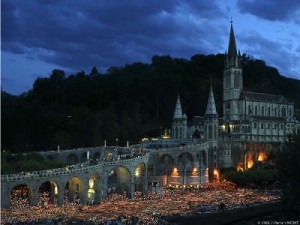 We live at a very special time. The confluence of many things has brought forth the clear need to be able to articulate the Social Teaching of the Catholic Church in a way that is accessible and applicable. This is not to be an effort where high-minded theories are to be bandied about. Rather, this is a time of opportunity wherein we can apply the Social Doctrine to the concrete so as to bring about a New Kingdom, a Revolution. – Omar G. from Regnum Novum
We live at a very special time. The confluence of many things has brought forth the clear need to be able to articulate the Social Teaching of the Catholic Church in a way that is accessible and applicable. This is not to be an effort where high-minded theories are to be bandied about. Rather, this is a time of opportunity wherein we can apply the Social Doctrine to the concrete so as to bring about a New Kingdom, a Revolution. – Omar G. from Regnum Novum
[powerpress]
3.  Look, Judge, Act
Blessed Pope John XXIII gave us this practical suggestion in his letter Mater et magistra. The Social Doctrine provides us with principles for reflection, criteria for judgment, and directives for action. Social justice is supposed to be lived out in our every day. That’s the point, and so this Holy Father gave us the paradigm.
Look at the world around you, that which is most immediate to you. Start with your family. Proceed to your culture. Witness the social and economic realities/policies near you. Know the political landscape of your city, county, state, and nation. See your neighbors close at hand and around the world. Use the principles of the Social Teaching as you look so that you know what to look for.
Judge what is best for the family, for the culture, for the society and the economy, for the state, for the world. Use the criteria provided by the Social Doctrine. What is missing? Why is it missing? What can be done?
Act on it. You’re a lay person with as real an obligation to evangelization as any priest. Do something in the world so as to make it’s semblance more like that which the Lord desires. Volunteer. Participate. Pray. Do not let some tell you that prayer is not action. Pray. You can pray and raise good children.
Also visit Omar’s “Discerning Hearts†page Catholic Social Teaching 101
Tags: catholic, catholic podcast, catholic prayer, catholic social doctrine, catholic social teaching, cathollc spirituality, lay person, look judge act, mater et magistra, new evangelization, Omar F. A. Guiterrez, political landscape, pope john xxiii, regnum novum, social justice, social teaching of the catholic church
This entry was posted on Friday, December 10th, 2010 at 5:52 pm
You can follow any responses to this entry through the RSS 2.0 feed.

